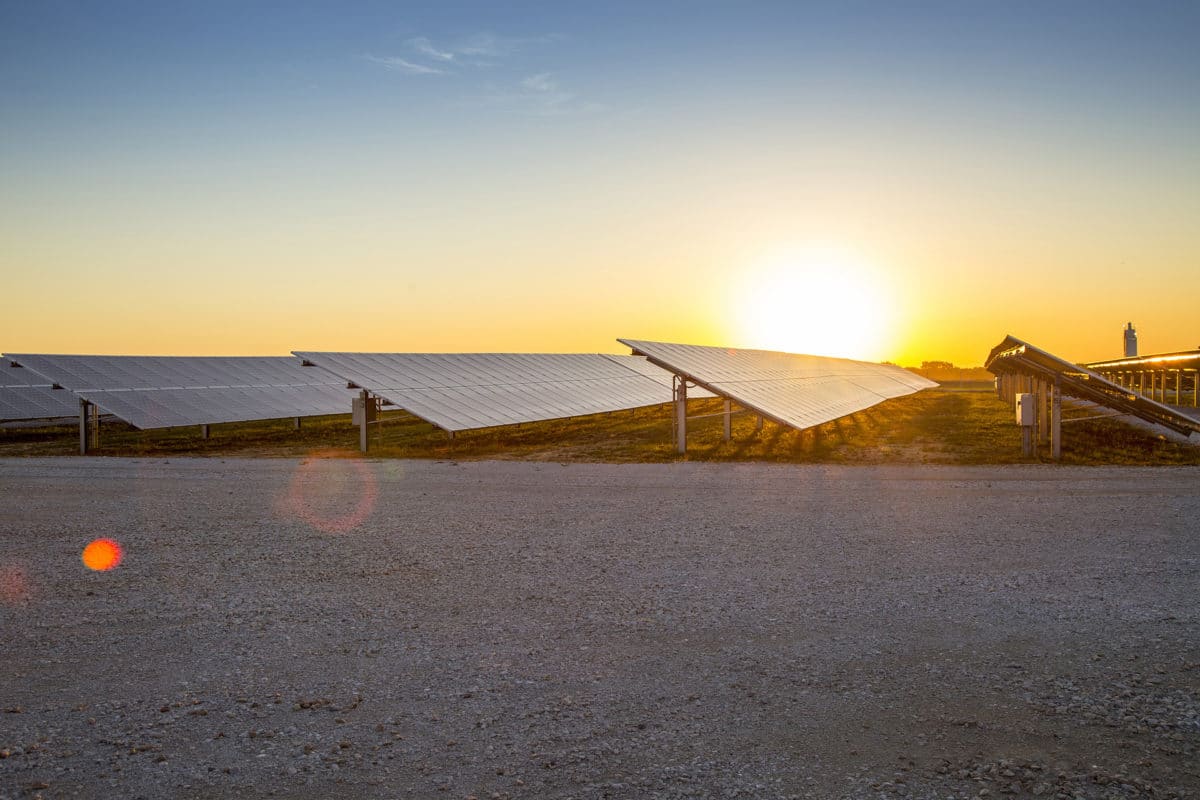This article was first published on pv magazine’s global site.
After a year of turbulence for global solar, new capacity installations will break the 100 GW barrier for the first time in 2019, according to consultants Wood Mackenzie.
Unveiling its Global Solar PV Markets – Top 10 Trends to Watch in 2019 report this morning, the Scottish energy research company predicted 103 GW of new PV will be installed in the next 12 months, as the sector rebounds following figures which showed last year was the first in which new capacity additions failed to rise year on year.
Wood Mackenzie has predicted the world will continue to wean itself off a dependency on China which, although it will remain the world’s top dog for some time to come, will see its share of global installed capacity fall from the 55% seen in 2017 to around 19% by 2023. The Edinburgh-based consultancy predicts Saudi Arabia, Iran, Egypt and Italy will be the world’s fastest-growing solar markets this year.
And another landmark will be set in the final three months of 2019, according to the report’s authors, with more than 30 GW of new solar anticipated for a quarterly record, as regional markets Latin America, the Middle East and Africa continue to expand.
Falling costs, higher efficiencies
The continuing decline in global solar costs could see the price of PV power fall as low as $14/MWh this year, under optimal conditions, with Wood Mackenzie highlighting the potential for record low prices in this month’s twice-delayed Mexican solar tender and in the 2.25 GW procurement expected in Saudi this year, on the back of a further 15% fall in global solar costs.
The price fall is set to go hand in hand with increased efficiency rates as the share of mono PERC cells in solar manufacturing output rises from 36% last year to 41%, according to the analysts, who also predict increased rollout of bifacial modules, particularly on desert sites, helped by a blended global average module price that could fall to $0.25/W.
It is shaping up to be a make-or-break year for mega scale solar projects – of 500 MW or higher capacity – according to Wood Mackenzie, with 14.7 GW of an estimated pipeline of 63 GW of such schemes due to start construction. With many of the in-development projects concentrated in India, China, the Middle East and Australia, fewer than 10 GW of such sprawling projects are up and running worldwide to date – half of them in China. With grand plans like the Solar Energy Corporation of India’s 10 GW solar-plus-manufacturing procurement repeatedly disappointing, the world waits to see whether big really is beautiful for PV.
The report speculates on whether the U.K. government’s decision to close its solar FIT subsidy will be rewarded with a subsidy free market to follow in the footsteps of Spain, Portugal and Italy. The U.K. has 2.3 GW of solar projects awaiting planning permission in the post-FIT regime and developers are likely to target corporate offtakers for a British solar price nearing a competitive £40/MWh ($52).
Corporate solar gold rush
That move towards corporate deals mirrors developments across the Atlantic, where the tech sector in particular is going hell for leather to sign solar deals ahead of expected continued rises in the interest rate and the expiry of investment tax credits (ITCs). The withdrawal of ITC support could also accelerate the secondary trading in solar projects which has taken PV mainstream for investment funds, and Wood Mackenzie has predicted the aggressive pricing seen in India’s reverse auction solar tenders could prompt M&A activity in that market.
The advance of solar-plus-storage in the U.S. will herald more capacity additions this year, according to the analysts, after Hawaii recently saw prices as low as $78/MWh for such schemes – although citing the acquisition of 567.5 MW of solar-plus-storage by PG&E appears awkward given the historic utility’s much publicized financial troubles.
And the researchers even appear optimistic about the world’s politicians, pointing to China’s recent grid parity announcement and a more ambitious renewable energy target of 58.7 GW by 2030 – some 40 GW of it solar – for Saudi Arabia. On the latter point, highlighting the enthusiasm shown by fossil fuel majors to use PV to fire oil and gas as well as mining operations is hardly likely to fill environmentalists with joy, but Wood Mac offers hope from Europe’s policymakers.
EU member states – and heaven knows whether that will include Britain – are due to announce their National Action Plans for renewable energy this month, with the political bloc to ratify them by the end of what could be another bright year for solar.
This content is protected by copyright and may not be reused. If you want to cooperate with us and would like to reuse some of our content, please contact: editors@pv-magazine.com.









How does this square with BNEF saying that 2018 already beat the 100GW install mark with 109GW of solar installed? BNEF is also predicting 2019 will see between 125GW to 141GW.
I like BNEFs numbers better so I hope they are more correct.
Which has a better track record – BNEF or WoodMac?
We may be looking into the issue of track records for predictions soon. Stay tuned. But also keep in mind that until official statistics are released, often many months after the fact, there is no neutral arbiter of who is correct.
Track record article would be good!